The Polestar 1 Coupe is a different breed of plug-in hybrid
Due to debut in 2020, this sleek carbon-fibre coupe will redefine the luxury hybrid market.
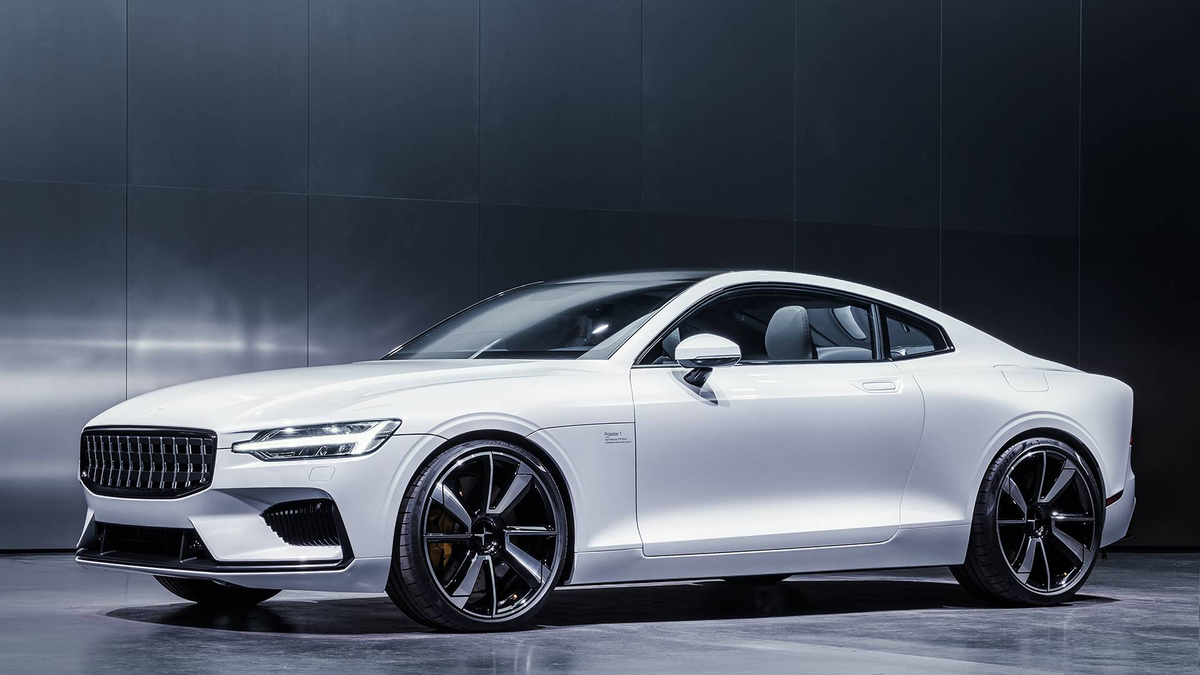
Volvo's electrifying offshoot Polestar is coming to Australia, with the Polestar 2 – an all-electric 5-door fastback – expected to hit local roads in late 2020. This road test of the Polestar 1, published under licence from our content partner Bloomberg, provides some hints as to what's in store for the SUV sibling.
"Is it a Volvo?” That’s all anyone wanted to know when they heard I drove the new Polestar 1 hybrid up the hills of New York’s Bear Mountain State Park last week.
The short answer is no, the Polestar 1 is not a Volvo. Not even close. It’s much more special than that.
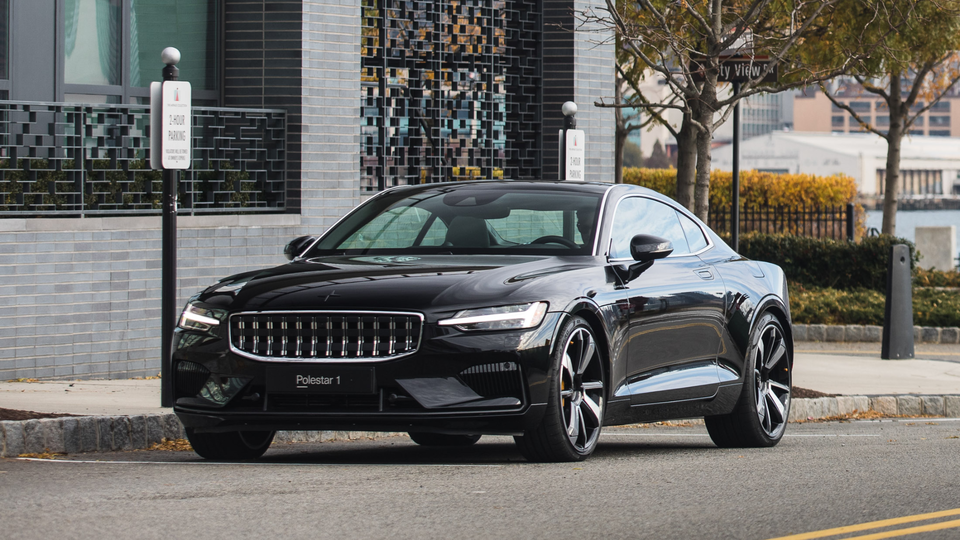
Volvos are great cars. They’re reliable, practical, fairly priced, and executed at the highest level. But Volvo-level vibes are not the goal for a vehicle aiming to qualify as a gasoline-optional luxury sports car.
With a complex hybrid electric drivetrain, a unique carbon fiber body, and the longest driving range available in plug-in hybrid electric cars on the market today, the Polestar 1 stands out among the luxury hybrid crowd. It gets 125km miles on pure electric charge – the Porsche Panamera E-Hybrid gets 22km of electric-only range; the BMW 7 Series eHybrid gets 26. Even the Volvo S60 and S90 hybrids are able to muster only 35km and 33km, respectively.
Where Volvo’s humble, softly square-looking vehicles maximize value and practicality (pricing starts at US$36,000), the US$156,500 Polestar 1 aims for performance and style. Where Volvo is the trusty workhorse of cars, Polestar is the elegant show-jumper, athletic yet refined. They have the same DNA, but they’re completely different animals.
A (Pole)star is born
Some background, in case you’ve been so caught up in the Tesla Model S vs. Porsche Taycan hype that everything else has gone by the wayside.
Polestar 1 is the first-ever production car from the Gothenburg, Sweden-based brand, which purchased Polestar in 2015 and jointly owns the brand with Chinese automaker Geely.
The 2+2 (two doors, four seats) grand touring coupe premiered in preproduction form at the 2018 auto show in Geneva, while the Polestar 2 fastback will make its debut late next year, and the Polestar 3 SUV in 2021.
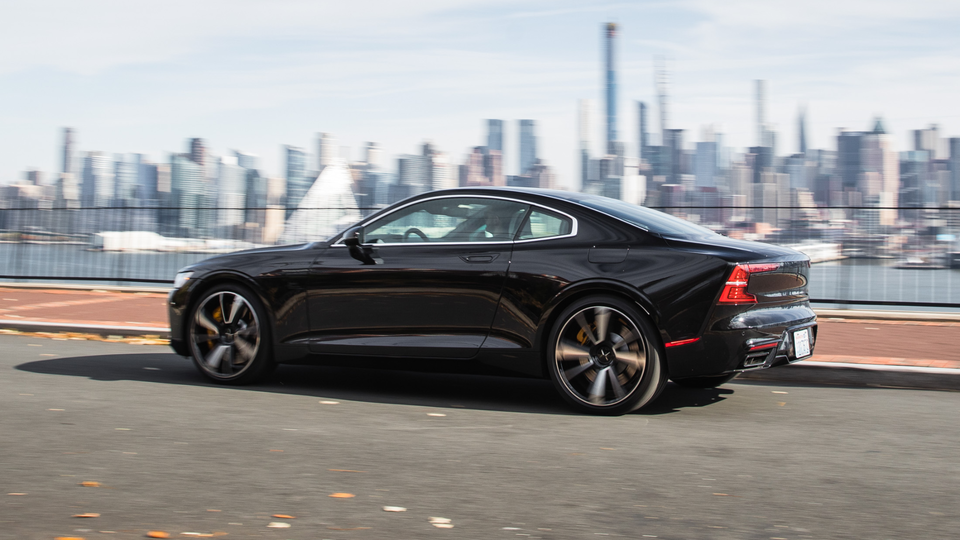
Since the auto show, Polestar has built its own factory and headquarters, with 200 employees, and solidified its business structure independent from Volvo. Production on the Polestar 1, which is built in China, starts in February.
It won’t make many – fewer than 500 per year for the first three years, with only 150 going to the U.S. annually. (“This car is not a moneymaker,” a Polestar spokesperson told me.)
But the old saying still applies: You have only one chance to make a first impression. So it’s been critical for the brand to get this first offering right.
Elegant outside, complex inside
The Polestar 1 may well be the most complex electric car out there. It can be driven in fully electric mode, with two rear electric motors providing 232 horsepower and 354 pound-feet of instant electric torque enabling extremely brisk acceleration.
Or, when you switch to another of its four drive modes, it will use a turbo- and supercharged combustion engine at the front of the car to add 326 horsepower and 384 pound-feet of torque.
If so desired, a 52-kilowatt, 71-horsepower integrated starter generator placed under the crankshaft gives an additional 119 pound-feet of electric torque when you opt for the Power drive mode. (All-wheel drive is the other drive mode accessed by the push of a button.)
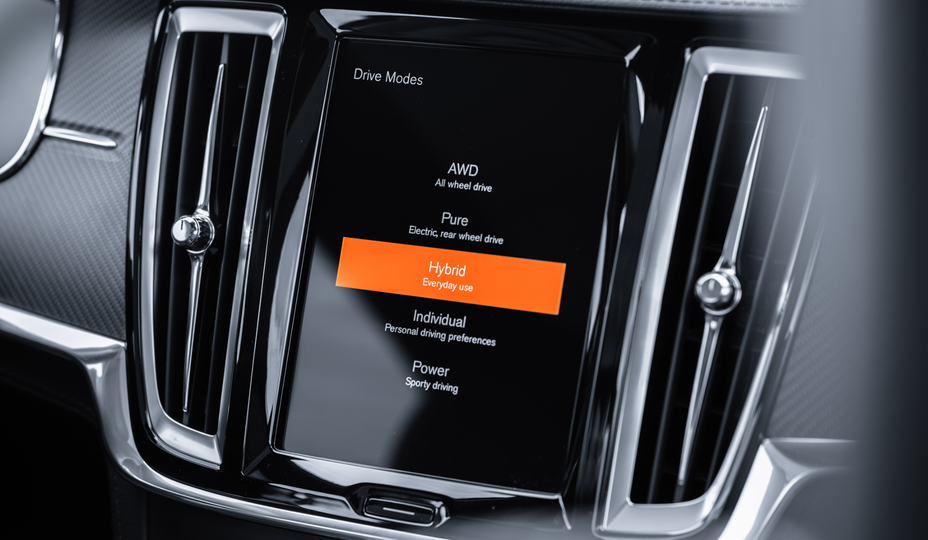
Total combined output is 619 horsepower and 738 pound-feet of torque. Total range, including using the combustion engine, is 870km. That beats both the power and range of all-electric vehicles such as the Tesla Model S, as well as the range of the coming Porsche Taycan Turbo S.
The car will charge to 80% of full range in less than an hour on a fast-charging station like the one Porsche uses, or overnight if you plug it into the slowest outlet you can find, like the one you use for your toaster. It’s powered from two battery packs: one located between the front seats, the other set above the rear axle.
That signature battery pack positioning enables a 48-52 overall weight distribution for the car (ideal for balance around corners) and a total battery capacity of 34 kilowatt-hours, enough to provide almost 80 miles of electric-only driving range. I saw it actually gain ground the longer I drove it, thanks to regenerative braking and other efficiency systems.
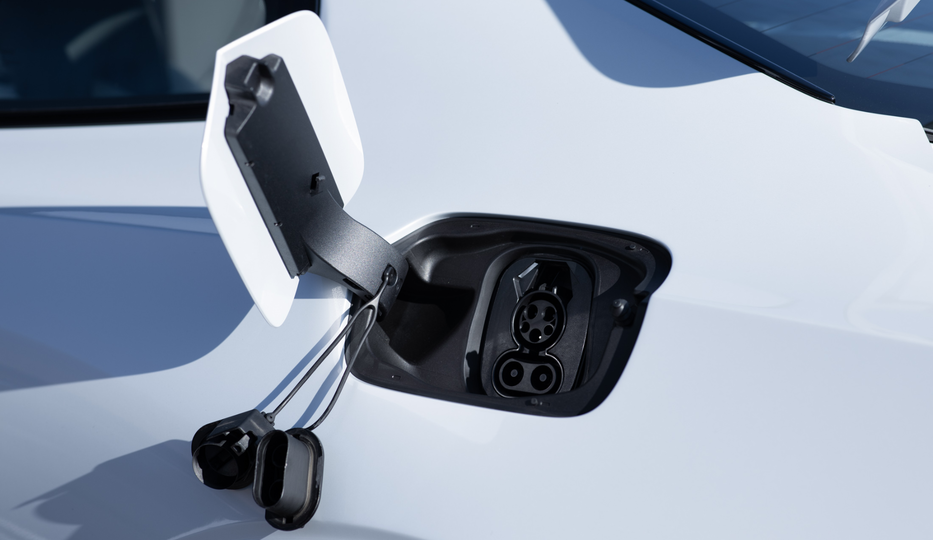
Each rear wheel of Polestar 1 also has its own gear set that enables what’s called “torque vectoring,” which enhances acceleration and stability on curves. It works like this: Instead of slowing the inner wheel on a curve like it normally would, the system accelerates the outer wheel to compensate for the difference in curve radii between both wheels.
The Polestar 1 includes a 326-horsepower, four-cylinder super- and turbocharged engine. At fast-charging stations its batteries can recharge to more than 80% in less than an hour.
The system essentially speeds up the outside of the wheels so they can keep up with the inside part, which have to travel a shorter distance around corners. Mitsubishi rally cars have used early versions of this system for decades; the likes of Porsche, Audi, and Mercedes-Benz use it now.
The result is maximum traction and driving confidence. As I crested the hills of Bear Mountain, the Polestar 1 felt connected through all four wheels to the road, extremely firm in steering, and accurate to perfection around corners.
Even the regenerative brakes were smooth, as opposed to the painfully abrupt stop, start, stop, start in other electric vehicles. I loved the seamless acceleration and quiet whirring and hum of the tires as I punched the accelerator.
Top speed is a computer-regulated 250km/h; zero to 100 is 4.2 seconds of instant bliss unadulterated by gear shifting or transmission hesitation. Everything felt easy, connected, and natural as the mountain’s old-wood trees gilded in autumnal hues blurred outside my window.
Simplicity Is genius
On the other hand, the Polestar 1 may also be the simplest-looking electric car on the market.
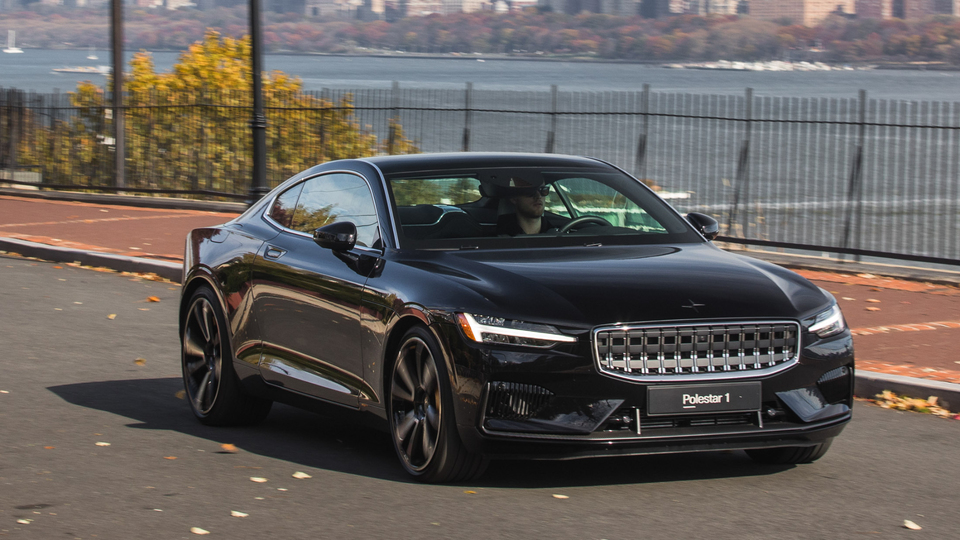
Born of the Swedish design aesthetic, it embodies the clean lines and pure design – wide, frameless doors and side mirrors enable the lines that start along the front of the car and continue unbroken to the rear.
The panoramic glass roof allows for a lower roofline across the entire car. Its carbon fiber body allows for crisp creases in the hood and over the wheels that we’d be hard-pressed to see anywhere else.
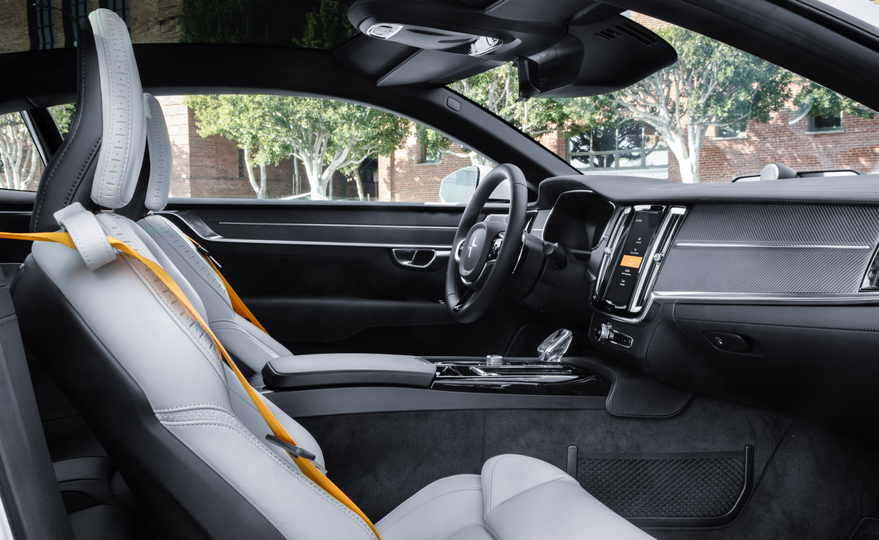
Carbon fiber also makes the car lighter, stiffer, and lower, saving more than 500 pounds on the 5,100-pound total body weight and increasing tortional rigidity – how stiff it is when it twists side to side - by 45%. It also means the Polestar can ride lower, because it requires fewer bolsters underneath than would a conventional car.
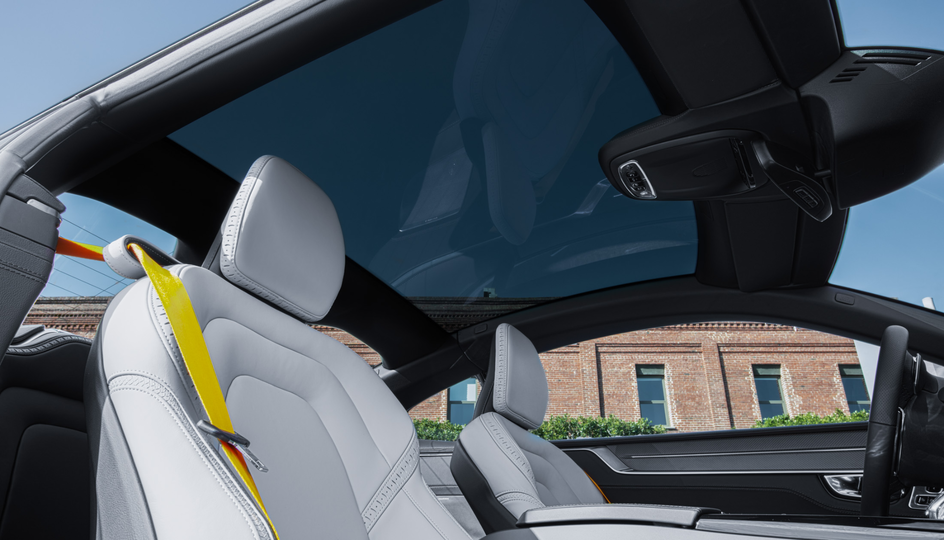
An adjustable heated steering wheel comes standard; the driver can access and control 14 different functions there without lifting her hands.
What’s more, the material allowed Polestar designers to create the powerful shape of the quarter panels, which may remind you of the retro Volvo P1800 of the 1960s and ’70s. There’s a small spoiler that lifts up or down at the touch of a button, and there’s no visible antenna. Everything is simple, beautiful, unfussy. This is a car that looks like it was made for an adult, not as a quirky appliance for tech geeks.

That simplicity extends to the options: There are five available exterior colors (white, blue, silver, black, slate); three finishes for the 21-inch wheels; and charcoal or zinc Nappa leather for the front seats. That’s it. The only optional “upgrade” you could possibly spend more money on is if you want a matte finish on the exterior paint, which costs $5,000.
The interior takes the best of Volvo interfaces and polishes them to a brilliant luster. More than half of what you see in a Polestar 1 cabin will be unique to the brand, not borrowed from Volvo.
Bowers & Wilkins premium audio comes with 15 speakers; lights under the doors illuminate the area below when you open them. Details like the Polestar logo reflected onto the panoramic glass roof and a handmade crystal gear selector give it a subtle cool.
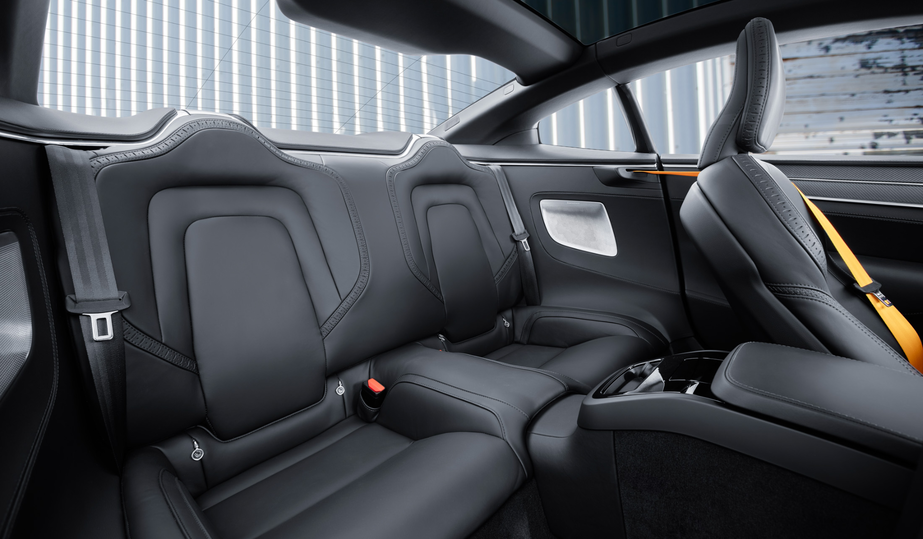
Behind the wheel, it felt like I was in on a secret - that a new brand was about to hit, supported by the staunch dealer network and manufacturing infrastructure of an iconoclast (Volvo), designed by the genius of the Swedes, and funded by the ample coffers of Geely.
When deliveries begin next June, the Polestar 1 grand coupe should stand out like a jewel among the several other luxury hybrid and electric automobiles on their way. It’s fast, fun to drive, beautiful to look at, and capable of covering long distances when using its smart hybrid system. With a price that reflects its excellent engineering and a progressive philosophy, the Polestar 1 is a winning option.
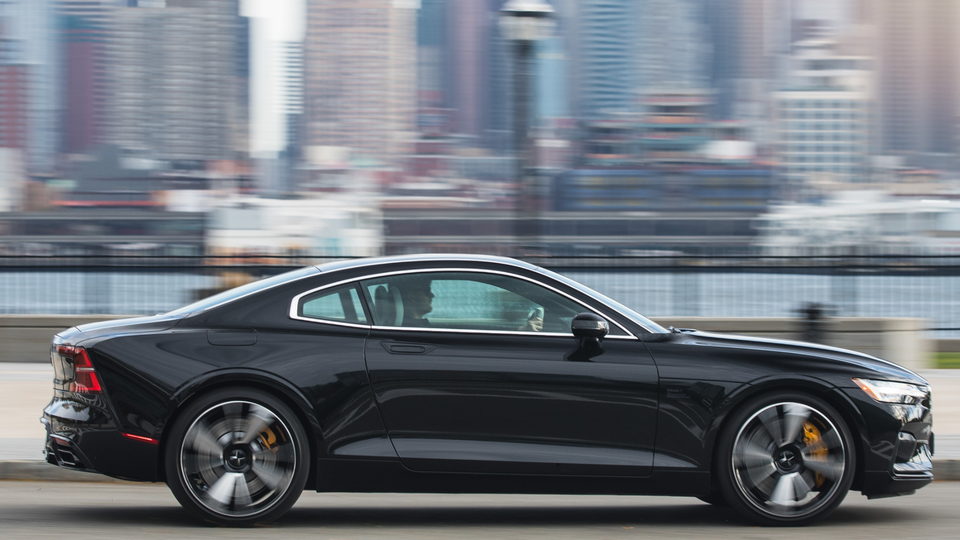

Hi Guest, join in the discussion on The Polestar 1 Coupe is a different breed of plug-in hybrid